Growing Eggplants can seem daunting, I know! But trust me, with a few simple tricks and a little DIY magic, you can be harvesting your own delicious, glossy eggplants in no time. Forget those bland, overpriced eggplants at the grocery store – imagine the satisfaction of serving up a dish made with produce you nurtured from seed to table!
Eggplants, also known as aubergines, have a rich history, dating back thousands of years to ancient Asia. They weren’t always the culinary stars they are today; initially, they were cultivated more for their ornamental value! Over time, different cultures embraced the eggplant, developing countless varieties and incorporating them into diverse cuisines. From the moussaka of Greece to the baba ghanoush of the Middle East, the eggplant has truly become a global ingredient.
So, why do you need these DIY tricks for growing eggplants? Well, eggplants can be a bit finicky. They need the right conditions to thrive, and without a little know-how, you might end up with stunted plants and disappointing yields. But don’t worry, I’m here to share my secrets! This guide is packed with easy-to-follow tips and hacks that will help you overcome common challenges and unlock the full potential of your eggplant garden. Get ready to impress your friends and family with your homegrown bounty!
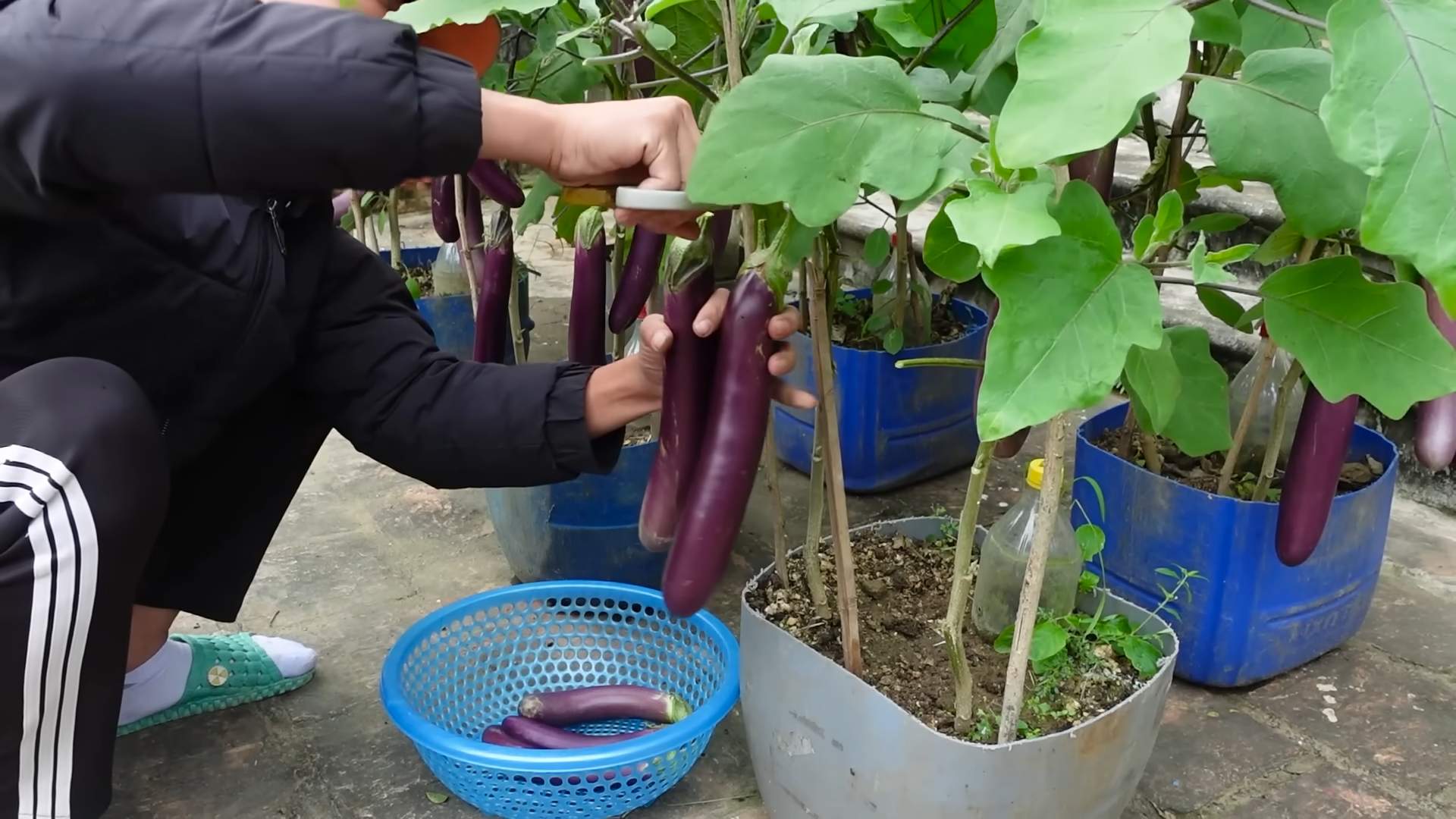
Growing Eggplants: A Simple DIY Guide for a Bountiful Harvest
Okay, so you want to grow eggplants? Awesome! They’re beautiful, delicious, and surprisingly easy to cultivate once you get the hang of it. I’ve been growing eggplants for years, and I’m excited to share my tried-and-true methods with you. This guide will walk you through everything from seed starting to harvesting, ensuring you have a successful and rewarding eggplant-growing experience.
Choosing the Right Eggplant Variety
Before we dive into the nitty-gritty, let’s talk about eggplant varieties. There are tons of different types, each with its own unique characteristics. Choosing the right one for your climate and preferences is crucial.
* **Classic Globe Eggplants:** These are your standard, large, purple eggplants you typically find in the grocery store. They’re great for grilling, roasting, and eggplant parmesan. ‘Black Beauty’ is a popular and reliable variety.
* **Italian Eggplants:** These are smaller and more elongated than globe eggplants, with a slightly sweeter flavor. ‘Listada de Gandia’ is a beautiful striped variety, and ‘Rosa Bianca’ is a lovely lavender-pink option.
* **Asian Eggplants:** These are long and slender, with thin skin and a mild flavor. They’re perfect for stir-fries and curries. ‘Ichiban’ and ‘Long Purple’ are excellent choices.
* **Novelty Eggplants:** If you’re feeling adventurous, try growing some novelty eggplants! ‘Casper’ is a white eggplant, and ‘Turkish Orange’ is a small, round, orange variety.
Consider your local climate. Some varieties are more heat-tolerant than others. Also, think about how you plan to use your eggplants. This will help you narrow down your choices and select the perfect variety for your garden.
Starting Eggplant Seeds Indoors
Eggplants need a long growing season, so starting them indoors is essential, especially if you live in a cooler climate. I usually start my seeds about 8-10 weeks before the last expected frost.
* **Gather Your Supplies:** You’ll need seed starting trays or small pots, seed starting mix, eggplant seeds, a spray bottle, and a heat mat (optional but recommended).
* **Prepare the Seed Starting Mix:** Moisten the seed starting mix with water until it’s damp but not soggy.
* **Sow the Seeds:** Fill the trays or pots with the moistened mix. Sow the eggplant seeds about 1/4 inch deep, placing 2-3 seeds per cell or pot.
* **Water Gently:** Use a spray bottle to gently water the seeds. Avoid overwatering, as this can lead to damping off, a fungal disease that can kill seedlings.
* **Provide Warmth:** Eggplant seeds need warmth to germinate. Place the trays or pots on a heat mat, if you have one. The ideal temperature is around 80-85°F (27-29°C).
* **Maintain Moisture:** Cover the trays or pots with a clear plastic dome or plastic wrap to help retain moisture. Remove the cover once the seeds germinate.
* **Provide Light:** Once the seedlings emerge, they’ll need plenty of light. Place them under grow lights or in a sunny window. If using a window, rotate the trays or pots regularly to prevent the seedlings from becoming leggy.
* **Thin the Seedlings:** Once the seedlings have their first true leaves (the second set of leaves), thin them to one seedling per cell or pot. Choose the strongest, healthiest seedling and snip off the others at the soil line.
**Step-by-Step Instructions:**
1. **Prepare Your Seed Starting Area:** Set up your seed starting area in a warm, well-lit location. I use a spare room with grow lights.
2. **Moisten the Seed Starting Mix:** In a clean container, add water to the seed starting mix until it’s evenly moist. It should feel like a wrung-out sponge.
3. **Fill the Trays or Pots:** Fill your seed starting trays or pots with the moistened mix, leaving about 1/2 inch of space at the top.
4. **Sow the Seeds:** Make a small indentation in the center of each cell or pot, about 1/4 inch deep. Place 2-3 eggplant seeds in each indentation.
5. **Cover the Seeds:** Gently cover the seeds with the seed starting mix.
6. **Water Gently:** Use a spray bottle to gently water the seeds. Be careful not to dislodge the seeds.
7. **Provide Warmth and Moisture:** Place the trays or pots on a heat mat and cover them with a clear plastic dome or plastic wrap.
8. **Monitor Germination:** Check the trays or pots daily for germination. Eggplant seeds typically germinate in 7-14 days.
9. **Remove the Cover:** Once the seeds germinate, remove the cover and place the seedlings under grow lights or in a sunny window.
10. **Thin the Seedlings:** Once the seedlings have their first true leaves, thin them to one seedling per cell or pot.
11. **Water Regularly:** Water the seedlings regularly, keeping the soil moist but not soggy.
12. **Fertilize Lightly:** Once the seedlings have their second set of true leaves, start fertilizing them with a diluted liquid fertilizer. I use a balanced fertilizer, such as 20-20-20, diluted to half strength.
Hardening Off the Seedlings
Before you transplant your eggplant seedlings into the garden, you’ll need to harden them off. This process gradually acclimates the seedlings to outdoor conditions, preventing them from being shocked by the sun, wind, and temperature changes.
* **Start Slowly:** Begin by placing the seedlings outdoors in a sheltered location for just an hour or two each day.
* **Increase Exposure Gradually:** Gradually increase the amount of time the seedlings spend outdoors each day, exposing them to more sun and wind.
* **Monitor the Seedlings:** Watch the seedlings closely for signs of stress, such as wilting or sunburn. If they show signs of stress, bring them back indoors and reduce the amount of time they spend outdoors the next day.
* **Harden Off for a Week:** Harden off the seedlings for at least a week before transplanting them into the garden.
**Step-by-Step Instructions:**
1. **Choose a Sheltered Location:** Select a sheltered location outdoors, such as a patio or porch, that is protected from direct sun and strong winds.
2. **Place the Seedlings Outdoors:** Place the seedlings outdoors in the sheltered location for 1-2 hours on the first day.
3. **Increase Exposure Gradually:** Each day, increase the amount of time the seedlings spend outdoors by 1-2 hours.
4. **Monitor the Seedlings:** Watch the seedlings closely for signs of stress.
5. **Water as Needed:** Water the seedlings as needed, keeping the soil moist but not soggy.
6. **Bring Indoors if Necessary:** If the weather is particularly harsh, such as during a heat wave or cold snap, bring the seedlings back indoors.
7. **Harden Off for a Week:** Continue hardening off the seedlings for at least a week before transplanting them into the garden.
Transplanting Eggplant Seedlings into the Garden
Once the danger of frost has passed and the soil has warmed up, it’s time to transplant your eggplant seedlings into the garden.
* **Choose a Sunny Location:** Eggplants need at least 6-8 hours of sunlight per day. Choose a location in your garden that receives plenty of sun.
* **Prepare the Soil:** Eggplants prefer well-drained, fertile soil. Amend the soil with compost or other organic matter to improve drainage and fertility.
* **Space the Plants Properly:** Space the eggplant plants 2-3 feet apart in rows that are 3-4 feet apart. This will give them plenty of room to grow and prevent overcrowding.
* **Dig the Holes:** Dig holes that are slightly larger than the root balls of the seedlings.
* **Transplant Carefully:** Gently remove the seedlings from their trays or pots and place them in the holes. Be careful not to damage the roots.
* **Backfill with Soil:** Backfill the holes with soil, gently firming it around the base of the plants.
* **Water Thoroughly:** Water the plants thoroughly after transplanting.
* **Mulch:** Apply a layer of mulch around the plants to help retain moisture, suppress weeds, and regulate soil temperature.
**Step-by-Step Instructions:**
1. **Choose a Sunny Location:** Select a location in your garden that receives at least 6-8 hours of sunlight per day.
2. **Prepare the Soil:** Amend the soil with compost or other organic matter to improve drainage and fertility.
3. **Space the Plants:** Space the eggplant plants 2-3 feet apart in rows that are 3-4 feet apart.
4. **Dig the Holes:** Dig holes that are slightly larger than the root balls of the seedlings.
5. **Transplant Carefully:** Gently remove the seedlings from their trays or pots and place them
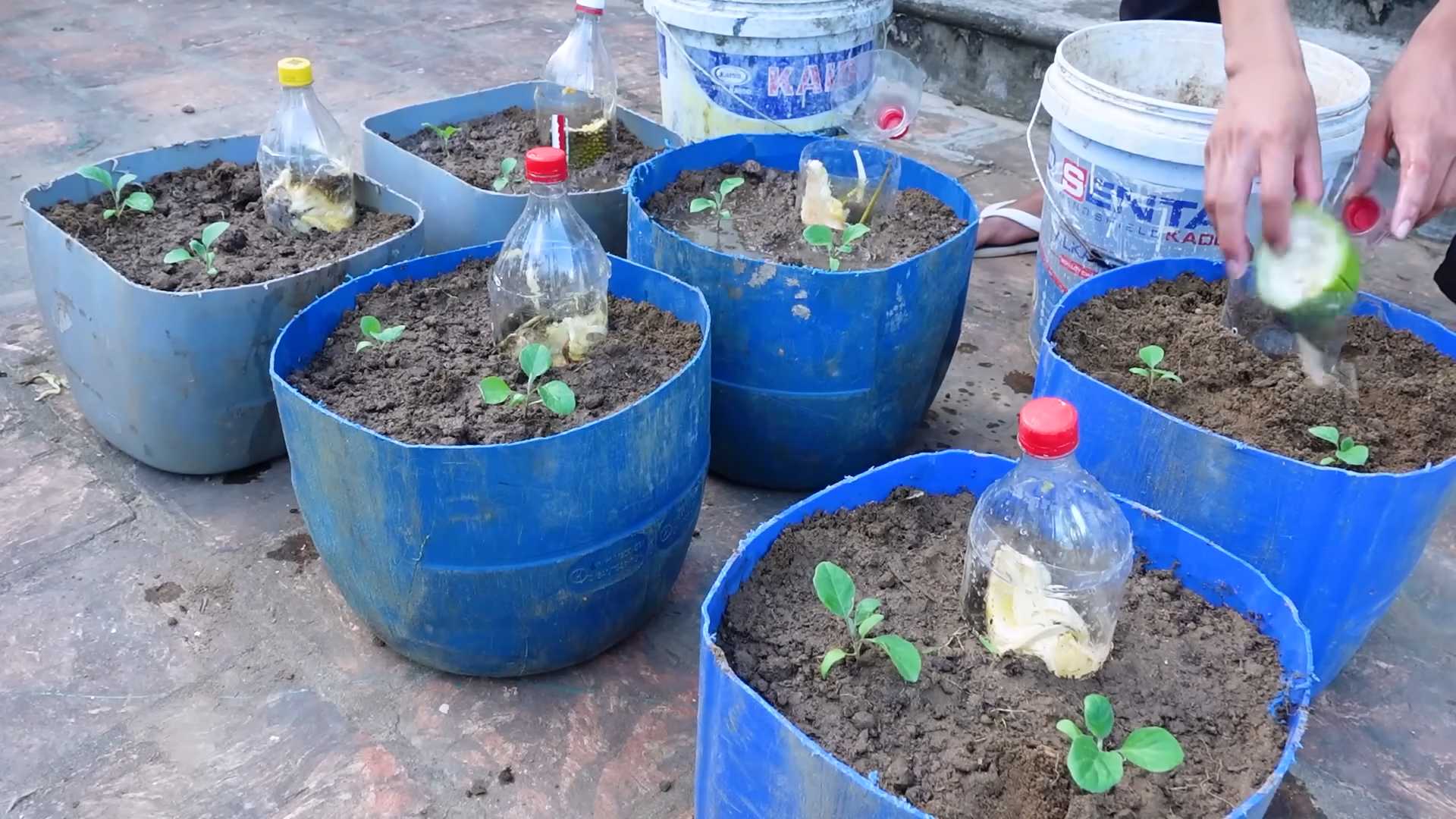
Conclusion
So, there you have it! Growing your own eggplants doesn’t have to be a daunting task. With a little patience, the right techniques, and this simple guide, you can transform your garden or even a sunny balcony into a thriving eggplant haven. The satisfaction of harvesting your own plump, glossy eggplants, knowing exactly where they came from and how they were grown, is truly unparalleled. Forget those bland, often overpriced eggplants at the grocery store – imagine the vibrant flavors and textures of freshly picked, homegrown goodness gracing your dinner table.
This guide provides a solid foundation, but don’t be afraid to experiment! Consider trying different eggplant varieties. From the classic globe-shaped Black Beauty to the slender Japanese eggplants or the vibrant Thai green eggplants, each offers a unique flavor profile and culinary application. You can also explore companion planting to enhance your eggplant’s growth. Basil, marigolds, and thyme are excellent choices, deterring pests and attracting beneficial insects.
Another variation to consider is container gardening. If you’re short on space, eggplants thrive in large pots (at least 5 gallons) filled with well-draining potting mix. Just ensure they receive ample sunlight and consistent watering. You can even try growing them indoors with the help of grow lights, especially if you live in a region with short growing seasons.
Growing eggplants is not just about the end product; it’s about the journey. It’s about connecting with nature, learning new skills, and enjoying the fruits (or rather, vegetables!) of your labor. It’s a rewarding experience that can bring joy and deliciousness to your life.
We wholeheartedly encourage you to give this DIY guide a try. Don’t be discouraged by initial setbacks – gardening is a learning process. Embrace the challenges, celebrate the successes, and most importantly, have fun!
Once you’ve harvested your first batch of homegrown eggplants, we’d love to hear about your experience. Share your tips, tricks, and triumphs in the comments below. Let us know which varieties you grew, what challenges you faced, and what delicious dishes you created. Your insights can help other aspiring eggplant growers on their journey. So, grab your gardening gloves, prepare your soil, and get ready to embark on a flavorful adventure! Happy growing!
Frequently Asked Questions (FAQ)
Q: How much sunlight do eggplants need?
A: Eggplants are sun-loving plants and require at least 6-8 hours of direct sunlight per day to thrive. Insufficient sunlight can lead to leggy growth, reduced flowering, and smaller, less flavorful fruits. If you’re growing eggplants indoors, invest in high-quality grow lights to supplement natural sunlight. Position the lights about 6-12 inches above the plants and keep them on for 14-16 hours per day.
Q: What kind of soil is best for growing eggplants?
A: Eggplants prefer well-draining, fertile soil with a slightly acidic to neutral pH (6.0-7.0). Amend your garden soil with compost, aged manure, or other organic matter to improve drainage, fertility, and water retention. If you’re growing eggplants in containers, use a high-quality potting mix specifically formulated for vegetables. Avoid using garden soil in containers, as it can become compacted and impede drainage.
Q: How often should I water my eggplants?
A: Eggplants need consistent watering, especially during hot, dry weather. Water deeply and regularly, aiming to keep the soil consistently moist but not waterlogged. Check the soil moisture by sticking your finger about an inch deep. If the soil feels dry, it’s time to water. Avoid overhead watering, as it can promote fungal diseases. Instead, water at the base of the plant, using a soaker hose or drip irrigation system. Mulching around the plants can also help retain moisture and suppress weeds.
Q: When should I start eggplant seeds indoors?
A: Eggplants have a long growing season (70-90 days), so it’s best to start seeds indoors 6-8 weeks before the last expected frost. Sow seeds about ¼ inch deep in seed-starting trays or small pots filled with seed-starting mix. Keep the soil consistently moist and warm (75-85°F) until germination. Once the seedlings emerge, provide them with plenty of light and gradually harden them off before transplanting them outdoors.
Q: How do I harden off eggplant seedlings?
A: Hardening off is the process of gradually acclimating seedlings to outdoor conditions before transplanting them into the garden. This helps prevent transplant shock and ensures that the plants can withstand the elements. Start by placing the seedlings outdoors in a sheltered location for a few hours each day, gradually increasing the amount of time they spend outside over the course of a week or two. Protect them from direct sunlight, wind, and frost.
Q: What are some common eggplant pests and diseases?
A: Eggplants are susceptible to several pests and diseases, including aphids, flea beetles, spider mites, blossom-end rot, and fungal diseases. Regularly inspect your plants for signs of infestation or disease. Use organic pest control methods, such as insecticidal soap, neem oil, or diatomaceous earth, to control pests. Prevent fungal diseases by providing good air circulation, avoiding overhead watering, and applying a fungicide if necessary. Blossom-end rot is caused by calcium deficiency and can be prevented by ensuring that the soil is properly amended with calcium and that the plants are watered consistently.
Q: How do I know when my eggplants are ripe?
A: Eggplants are typically ready to harvest when they are firm, glossy, and have reached their mature size and color. The skin should be smooth and unblemished. Gently press the skin with your thumb; if it springs back, the eggplant is ripe. Overripe eggplants will become dull, soft, and bitter. Use a sharp knife or pruning shears to cut the eggplant from the plant, leaving a short stem attached.
Q: Can I grow eggplants in containers?
A: Yes, eggplants can be successfully grown in containers, provided that the containers are large enough (at least 5 gallons) and have good drainage. Choose a well-draining potting mix specifically formulated for vegetables. Place the containers in a sunny location and water regularly. You may also need to fertilize the plants more frequently, as nutrients can leach out of the soil more quickly in containers.
Q: What are some good companion plants for eggplants?
A: Several plants can benefit eggplants when planted nearby. Basil repels many common eggplant pests, while marigolds deter nematodes and other soil-borne pests. Thyme attracts beneficial insects that prey on aphids and other pests. Other good companion plants for eggplants include beans, peppers, and spinach. Avoid planting eggplants near fennel, as it can inhibit their growth.
Q: How do I store harvested eggplants?
A: Store harvested eggplants in the refrigerator for up to a week. Wrap them loosely in plastic wrap or place them in a perforated plastic bag to prevent them from drying out. Avoid storing eggplants near ethylene-producing fruits, such as apples and bananas, as this can cause them to ripen too quickly.

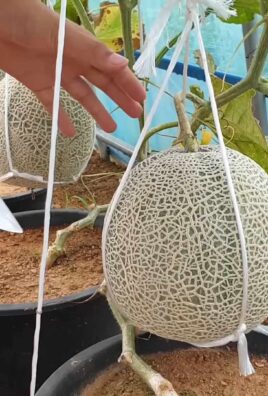
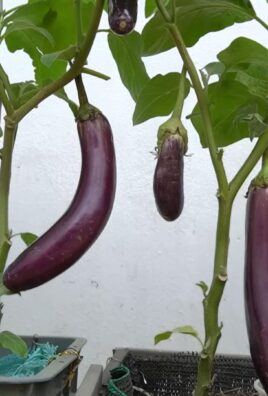
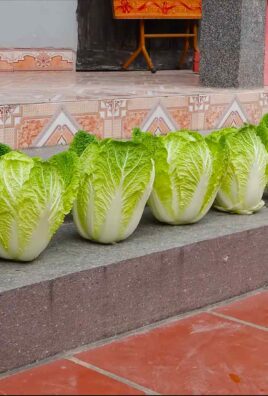
Leave a Comment